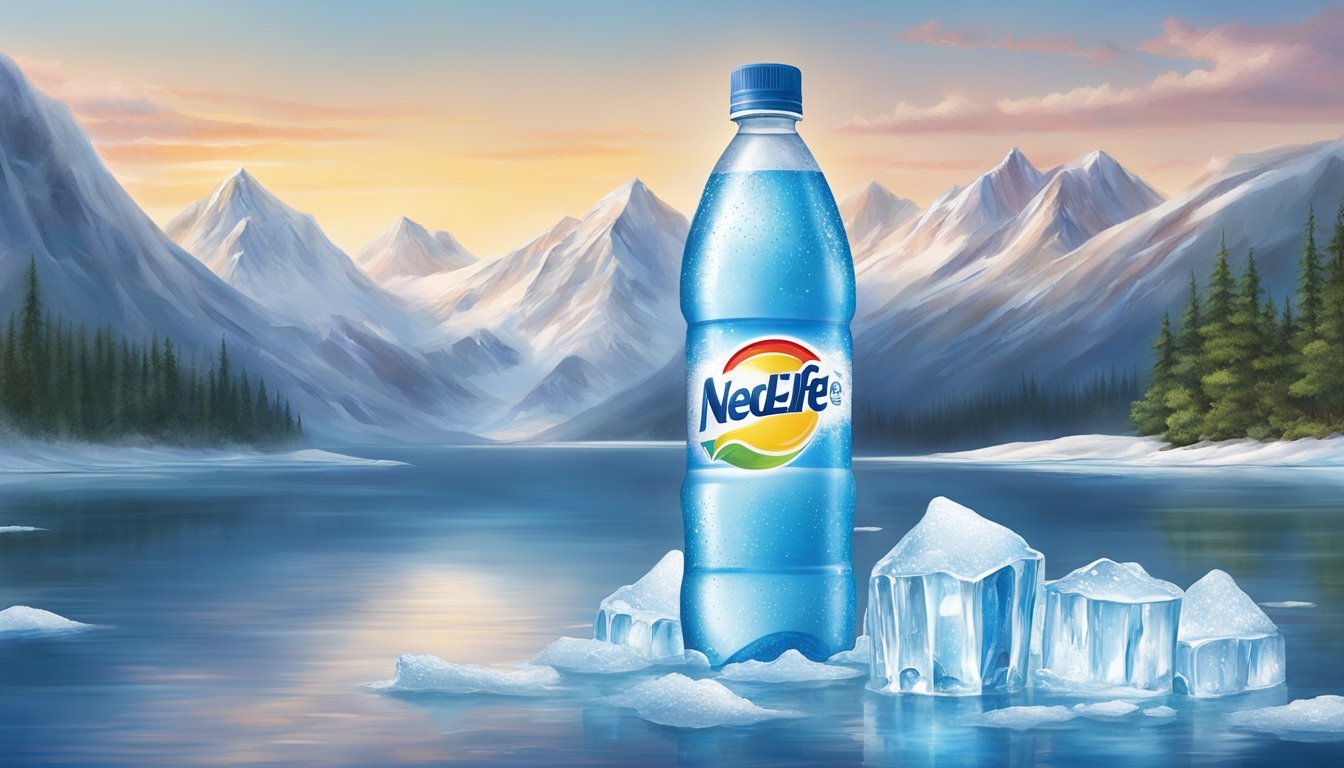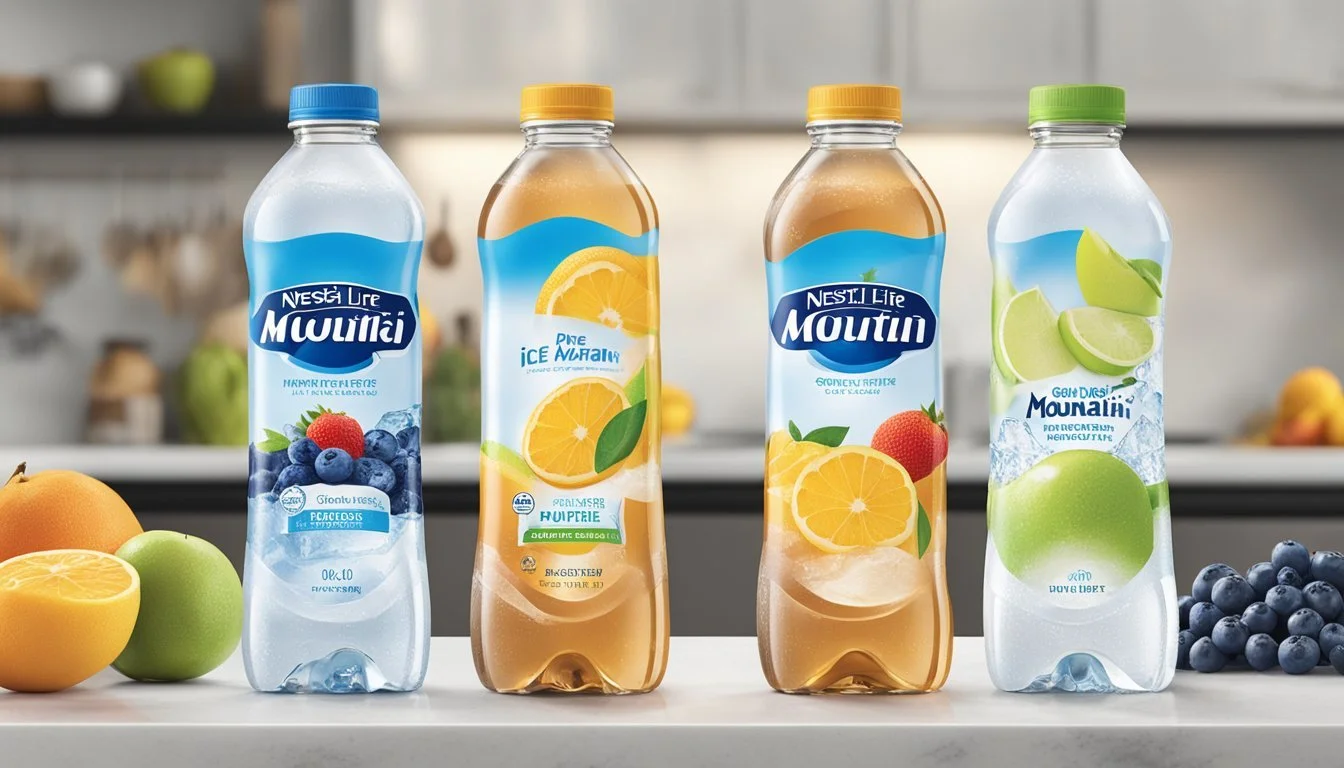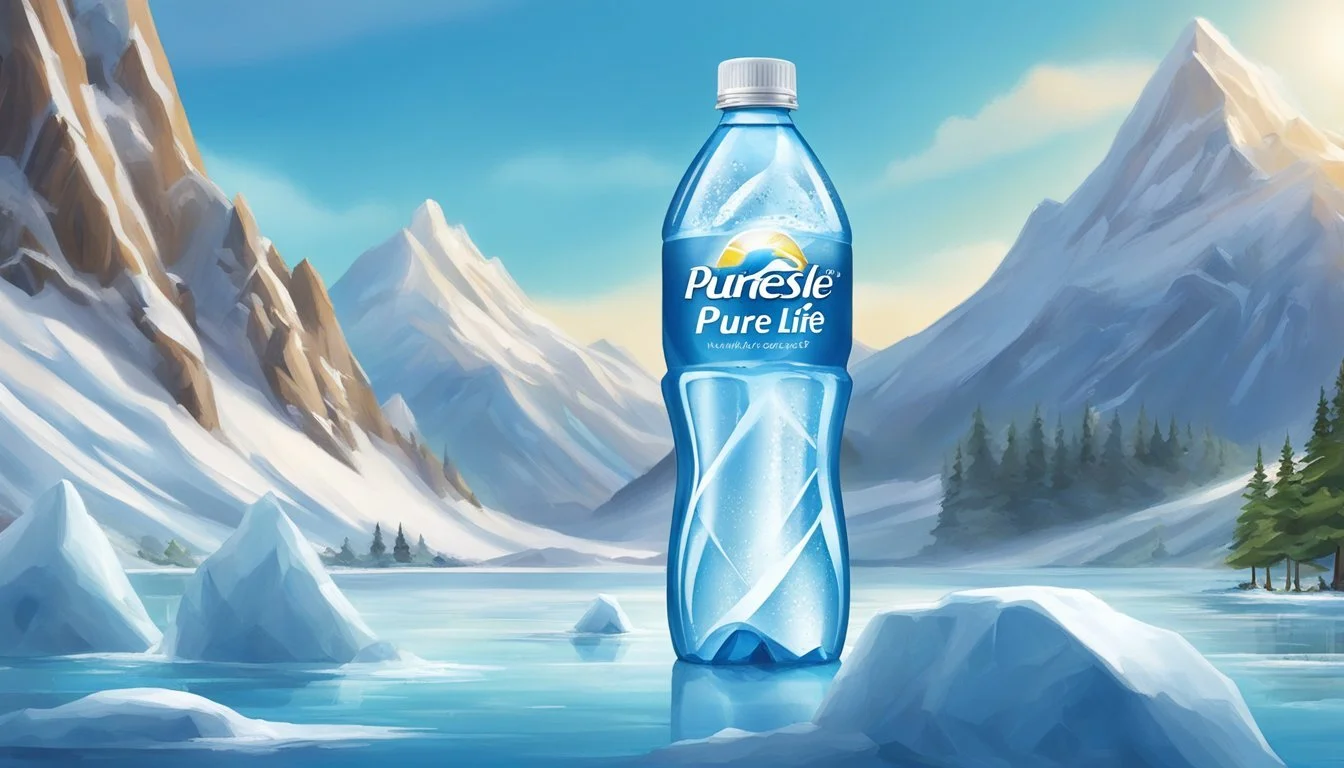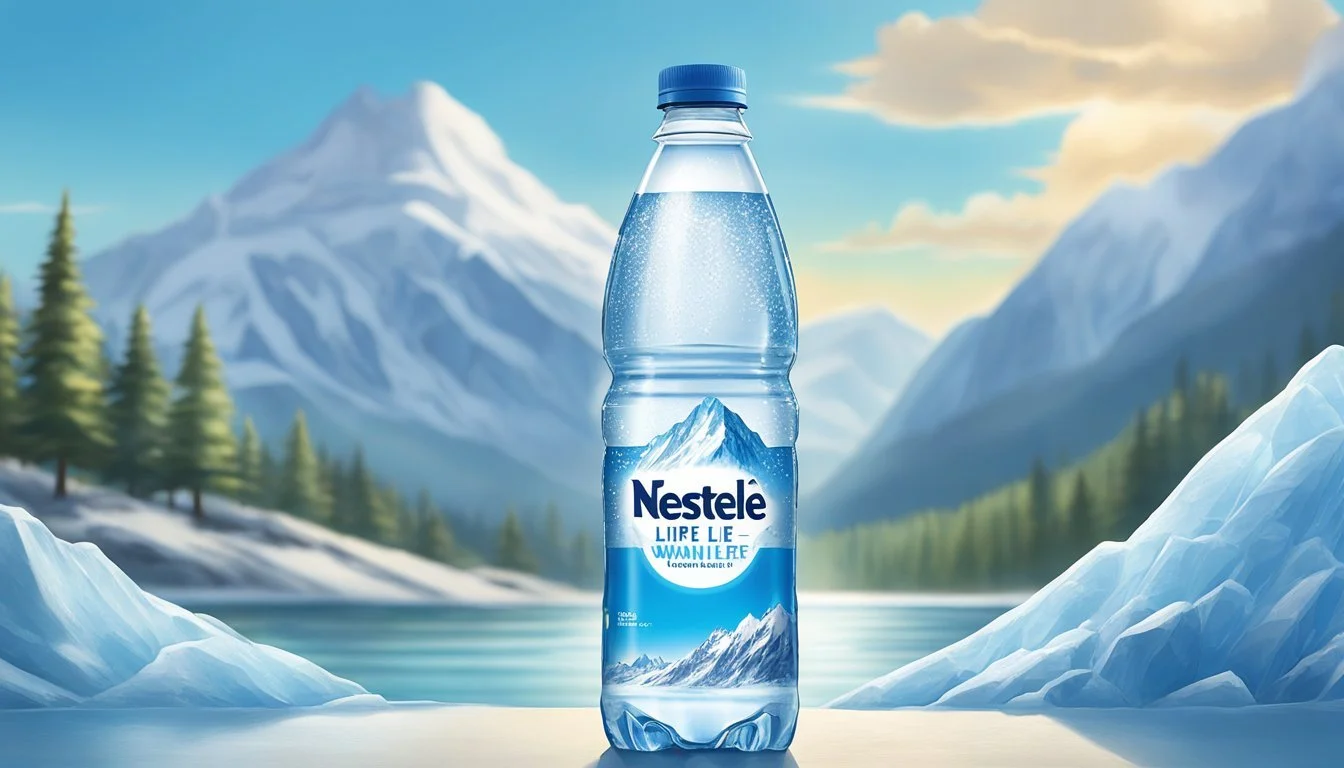Ice Mountain vs. Nestlé Pure Life
Comparing Quality and Taste of Bottled Waters
In the world of bottled water, consumers are often confronted with a myriad of choices, each claiming purity, taste, and health benefits. Among the plethora of brands, Ice Mountain and Nestlé Pure Life stand out as prominent players in the market. Ice Mountain is known for its Midwest origins, touting its water as sourced from natural springs, whereas Nestlé Pure Life, a product of the world's largest bottled water corporation, markets itself on its stringent purification process and consistent quality.
Determining which bottled water is better is not just a matter of taste preference but involves a deeper look at sourcing, purification methods, and the overall brand commitment to environmental sustainability and consumer health. While Ice Mountain appeals to those seeking a natural spring taste, Nestlé Pure Life is often chosen for its wide availability and affirmed safety standards. However, it's worth noting that Nestlé Pure Life has faced criticism over its sodium content and use of artificial additives.
The choice between Ice Mountain and Nestlé Pure Life ultimately rests on individual preferences and priorities. Factors such as the source of the water, the environmental impact of the bottling process, and the presence of any additional ingredients can all sway a consumer's decision. As such, the debate between these two brands is emblematic of the larger discussions in the industry about what constitutes the best bottled water.
Water Quality and Health Implications
When choosing between Ice Mountain and Nestlé Pure Life bottled water, it's crucial to consider factors such as the source, filtration process, purity, and regulatory compliance, all of which play a significant role in determining water quality and potential health implications.
Source and Filtration Processes
Ice Mountain typically derives its water from carefully selected natural springs, while Nestlé Pure Life generally sources its water from protected wells or public water supplies before it undergoes a rigorous filtration process. Ice Mountain's filtration process may include micron filtration and UV light treatment, aimed at preserving the natural mineral composition of the spring water. On the other hand, Nestlé Pure Life's multi-step filtration process often includes reverse osmosis and/or distillation, followed by the addition of a unique blend of minerals for consistent taste.
Contaminants and Purity
A key aspect of bottled water is its purity level. Both Ice Mountain and Nestlé Pure Life must meet the FDA regulations for contaminants, which include limits on substances such as heavy metals like lead and arsenic. While both brands are considered safe to drink, Nestlé Pure Life has faced scrutiny in the past regarding the levels of microplastics found in its water, which they have since worked to address.
Health Benefits and Risks
Consuming bottled water from trusted brands such as Ice Mountain or Nestlé Pure Life carries certain health benefits, such as hydration without the added calories found in sugary beverages. However, consumers should be mindful of BPA (Bisphenol A), a chemical that can leach from plastic bottles into the water, although both companies use BPA-free packaging to mitigate this risk. Regular consumption of water with high mineral content can also contribute positively to one's nutritional intake.
FDA Regulations and Compliance
Both Ice Mountain and Nestlé Pure Life are subject to FDA regulations, ensuring that their products meet safety and quality standards. The FDA requires bottled water to be tested for contaminants and pathogens, and mandates that companies adhere to specific levels for a range of substances, including arsenic, lead, and other potential toxins. Compliance with these regulations aids in providing consumers with a product that is safe for daily consumption.
Environmental Impact and Sustainability
In the debate between Ice Mountain and Nestlé Pure Life bottled water, the environmental impact and sustainability of both brands come under scrutiny. Factors including the bottling process, sourcing of the water, and company initiatives for sustainable practices are critical and differ significantly between the two.
Bottling Process and Plastic Usage
Ice Mountain utilizes PET (polyethylene terephthalate) plastic for its bottles, which is a commonly recycled material, but does not often get repurposed due to various economic and logistical issues. Nestlé Pure Life also uses PET plastic but has made efforts to slightly reduce the amount of plastic in their bottles. Both brands contribute to the plastic consumption issue; however, Nestlé has committed to making 100% of its bottles recyclable or reusable by 2025.
Ice Mountain: Predominantly PET plastic bottles
Nestlé Pure Life: PET plastic with reduced plastic content in bottles
Water Source Sustainability
The sourcing of water is a critical aspect when assessing the environmental footprint of bottled water. Ice Mountain has faced criticism for its water withdrawal practices in Michigan, with environmental groups expressing concerns about the impact on local streams and groundwater. Sustainability of groundwater sources has been called into question, and the importance of real-time water resource data is highlighted. On the other hand, Nestlé Pure Life sources water from various locations and has faced similar scrutiny over its water extraction practices.
Ice Mountain: Criticized for local water sourcing impacts
Nestlé Pure Life: Varied sources with comparable scrutiny
Brand Initiatives and Eco-Friendly Alternatives
Nestlé has taken steps towards sustainability; David Tulauskas, Nestlé's chief sustainability officer, emphasizes the importance of recycling PET. The company has been exploring eco-friendly packaging alternatives, such as glass bottles and boxed water, which are more sustainable but face challenges in recycling efficiency and energy consumption during production. Ice Mountain, while having no widespread adoption of alternative packaging like glass or refillable bottles, must evaluate the long-term sustainability of its packaging choices.
Nestlé Pure Life: Exploring glass and boxed water alternatives; recycling focus
Ice Mountain: Lacks significant alternative packaging initiatives
The aforementioned details present a complex picture, with each brand having its own challenges and steps toward reducing their environmental impact. Consumers should weigh these factors when considering the overall sustainability of their bottled water choice.
Taste Profile and Consumer Preferences
When selecting bottled water, consumers often have varied preferences that hinge upon factors such as taste, purity, and crispness. This section delves into what influences these preferences and how Ice Mountain and Nestlé Pure Life are perceived by consumers.
Factors Influencing Taste
The taste of bottled water can be affected by several elements including the source of the water, mineral content, and pH levels. Ice Mountain is known for sourcing its water from natural springs, which may contribute to a fresh and crisp taste profile. Conversely, Nestlé Pure Life, which undergoes a demineralization and remineralization process, might offer a more consistent and neutral flavor due to added minerals that ensure the same taste irrespective of the source.
Acidity Levels:
Ice Mountain: Typically neutral pH
Nestlé Pure Life: pH balanced with added minerals for standardized taste
Mineral Content:
Ice Mountain: Naturally occurring minerals may vary
Nestlé Pure Life: Controlled mineral content
Comparative Taste Tests
Taste tests are a direct way to evaluate consumer preference between Ice Mountain and Nestlé Pure Life. In taste tests, Ice Mountain might be described as having a "natural" and "refreshing" profile, which could be attributed to its spring water origins. Nestlé Pure Life, on the other hand, might exhibit a "smooth" profile that tends not to vary from bottle to bottle, courtesy of its precise processing method.
Taste Descriptors:
Ice Mountain: Often considered more natural and fresh
Nestlé Pure Life: Generally seen as smooth and consistent
Consumer Taste Reviews
Consumers often leave reviews based on their sensory experience with bottled water, discussing attributes such as purity and crispness. Reviews can vary widely, but trends can emerge. For example, some consumers might find Ice Mountain's taste to be "pure" and "untainted," suggesting a preference for its spring water source. Others may favor the "clean" and "controlled" taste of Nestlé Pure Life, indicative of its purification and remineralization process.
Consumer Preferences:
Ice Mountain: Preferred for its natural purity and taste variances
Nestlé Pure Life: Chosen for its consistency and predictable flavor profile
Brand Analysis and Market Position
In the landscape of bottled water, Ice Mountain and Nestlé Pure Life emerge as noteworthy players with varying market statures and consumer perceptions. Here, we examine the brands’ histories, market trends, and product offerings.
Company Background and History
Nestlé Pure Life began as a part of Nestlé Waters, the world's leading bottled water company. It has established itself through a combination of widespread distribution and marketing efforts. Ice Mountain, on the other hand, is sourced from natural springs in the Midwest and has been under Nestlé's portfolio, indicating a shared history with its corporate affiliate, Nestlé Pure Life.
Market Trends and Consumer Loyalty
Nestlé Pure Life has been subjected to competition from brands such as Aquafina and Dasani, owned by PepsiCo and Coca-Cola respectively. These brands dominate the bottled water market alongside Nestlé. However, Ice Mountain commands a loyal customer base in the Midwest, where consumers often prefer local water sources. Both brands face challenges from increasing consumer awareness about the environmental impact of bottled water and a growing preference for sustainable alternatives.
Product Range and Packaging Varieties
Nestlé Pure Life offers a broad product range, including flavored water and sparkling water, which cater to diverse consumer tastes. The brand's packaging options vary from small single-serve bottles to large multi-gallon containers suitable for home and office use. Ice Mountain also presents an array of choices, coming in various sizes and including sparkling water options. Both brands have made efforts to incorporate recycled materials into their packaging as a response to environmental concerns.
Through a clear understanding of their history, market positioning, and varied product lines, Ice Mountain and Nestlé Pure Life continue to compete within the dynamic bottled water industry.
Comparative Analysis
The discussion centers on Ice Mountain Natural Spring Water and Nestlé Pure Life, examining price, quality, and consumer perspectives.
Price Comparison
When comparing Ice Mountain Natural Spring Water and Nestlé Pure Life, one will notice variations in pricing which often depend on the point of purchase and the quantity. Generally, Nestlé Pure Life is marketed as an affordable option, being one of the largest bottled water brands globally. Ice Mountain may occasionally be priced slightly higher, reflective of its branding as natural spring water.
Ice Mountain Natural Spring Water
24-pack 16.9oz bottles: Approximately $3.50-$5.00
Nestlé Pure Life
24-pack 16.9oz bottles: Approximately $2.50-$4.00
Health and Quality Reports
Quality reports are essential for evaluating the safety and health aspects of bottled water. Both brands must adhere to the standards set by the International Bottled Water Association. Nestlé Pure Life's website offers access to their water quality reports, highlighting their compliance with health standards. Ice Mountain also adheres to these regulations, with reports indicating satisfactory levels. It should be noted, however, that some critiques point to the presence of minerals and potential additives in Nestlé Pure Life which may not be desirable for all consumers.
Ice Mountain Natural Spring Water
Source: Natural springs
Additives: No significant additives reported
Nestlé Pure Life
Source: Varied, including public water sources
Additives: Some reports suggest minerals and additives
Consumer Ratings and Recommendations
Consumer preferences are often a reflection of taste, quality, and brand trust. Nestlé Pure Life, due to its wide availability and affordable pricing, maintains strong sales, though some consumers express concerns over taste and quality. Ice Mountain receives positive feedback for its taste and the perception of being a natural product. It tends to garner recommendations for those seeking water with a more refreshing taste and fewer additives.
Ice Mountain Natural Spring Water
Consumer sentiment: Generally positive with emphasis on taste
Nestlé Pure Life
Consumer sentiment: Mixed, with affordability being a strong factor in its favor
Alternative Water Choices
When considering Ice Mountain and Nestlé Pure Life, consumers also have the option to explore tap water, carbonated and flavored waters, as well as alkaline and mineral-enhanced waters to suit their taste and health preferences.
Tap Water vs. Bottled Water
Tap water is a cost-effective and eco-friendly alternative to bottled water. It is regulated by the Environmental Protection Agency (EPA) in the United States and often contains fluoride, which benefits dental health. While bottling companies typically market their products as pure and clean, many brands, including Ice Mountain and Nestlé Pure Life, source their water from municipal supplies, similar to what is available from the tap.
Carbonated and Flavored Water Options
For those desiring a bit of effervescence, carbonated water brands like San Pellegrino and La Croix offer a variety of options. San Pellegrino provides naturally carbonated mineral water enriched with minerals, while La Croix focuses on a wide range of flavors in its sparkling water with no added sugars or artificial ingredients. These can be hydrating alternatives that satisfy the craving for fizz without the calories of sugary sodas.
Alkaline and Mineral-Enhanced Water
Alkaline water, with its higher pH level, claims to offer health benefits such as neutralizing acid in the bloodstream. Mineral-enhanced waters, on the other hand, may contain added nutrients like calcium, magnesium, and potassium. These types of waters aim to provide additional health benefits beyond hydration. Brands that specialize in these offerings provide options for consumers seeking more than just quenching their thirst.
Consumer Guidance and Tips
When selecting bottled water, consumers should consider water quality, taste preference, and environmental impact. Understanding water quality reports, making an informed choice, and being aware of the ecological consequences can guide one to the optimal bottled water selection.
How to Read Water Quality Reports
Consumers can access water quality reports, which are often available as PDF documents on the water brand’s website or upon request via email. The reports provide information on contaminants and water source quality. Key indicators include the levels of minerals, pH balance, and presence of pollutants. Look for signals such as excessively high levels of certain chemicals indicating potential health risks. A lower score in a water quality report could suggest that the water is not the best choice.
Choosing The Best Bottled Water
When ranking bottled water from worst to best, factors to consider include taste, source purity, mineral content, and absence of contaminants. Nestlé Pure Life and Ice Mountain are two commonly compared brands.
Ice Mountain:
Sourced from springs
Typically enjoyed for its taste
Nestlé Pure Life:
Undergoes extensive purification
Added minerals for taste
Customers may prefer the spring-sourced Ice Mountain for its natural composition, while others might opt for Nestlé Pure Life due to its purification process.
Tips
Check for added contents like sodium or sweeteners
Review consumer reports and taste tests
Environmental Considerations for Buying
An environmentally conscious consumer should consider the ecological footprint of bottled water. Factors include the brand's water source management, bottle material, and the company's recycling policies. One can look for brands that use recycled materials and support bottle recycling to minimize plastic waste. Purchasing bottled water from a company that engages in sustainable practices can reduce environmental impact.
Recyclable Packaging: Prefer brands that use high percentages of recycled plastics.
Sustainable Sourcing: Choose brands that commit to responsible water sourcing.
Carbon Footprint: Consider the distance the water has traveled from source to store.
By paying attention to these guidelines, consumers can make informed decisions that align with their values and preferences.
Conclusion
In comparing Ice Mountain and Nestlé Pure Life bottled water, consumers often consider factors such as taste, source, and brand trustworthiness.
Ice Mountain:
Sources: Natural springs in the Midwest
Taste: Often described as fresh and clean
Transparency: Provides detailed source information
Nestlé Pure Life:
Sources: Public water sources with purification
Taste: Consistent and neutral
Transparency: Advanced purification process outlined
Transparency:
Ice Mountain is lauded for its clear labeling of spring sources.
Nestlé Pure Life emphasizes its multi-step purification system, which includes demineralization and added minerals for a consistent flavor profile.
When deciding which water is better, it ultimately depends on personal preferences regarding taste and the importance one places on the source of water. Ice Mountain appeals to those who favor spring water, while Nestlé Pure Life caters to those prioritizing a consistent taste resulting from thorough purification.
Both brands are significant players in the bottled water market, each providing a reliable product that adheres to strict standards for safety and quality. They aim to maintain consumer trust through their respective practices of source transparency and water treatment processes.







